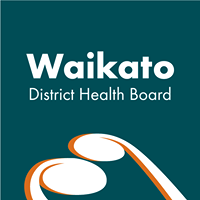Report Shows Waikato Continues to Provide Good Maternity Services
The New Zealand Maternity Clinical Indicators yearly report released today by the Ministry of Health demonstrates that women in Waikato are receiving good maternity care and Waikato is doing well against the national average for all district health boards (DHBs).
This report (external link) is based on 2012 information collated and analysed by the Ministry of Health comparing the birth outcomes of first time mothers across all DHBs. First time mothers are regarded as the fittest and healthiest women giving birth and can expect to have similar clinical outcomes, and so comparisons among DHBs is possible.
Dr Tony Stock, Waikato DHB’s new clinical unit leader for Obstetrics and Gynaecology says that the Maternity Clinical Indicators for 2012 look impressive and are largely a reflection of good midwifery care. “There are a couple of areas where we may look at practice, but these probably relate more to patient mix and medical intervention.”
Clinical midwifery director Corli Roodt says since 2012 the Waikato DHB’s Maternity Quality and Safety Programme has introduced a large number of improvement projects in Waikato maternity services.
“These changes are having a very positive impact on our services and should result in even more improvements in the data of future reports.”
The latest report shows that in the cohort group 74 percent of Waikato women have an uncomplicated birth compared with the 68.6 percent average rate in New Zealand. Waikato DHBs caesarean section rate is 10.6 percent, which is considerably lower than the nation rate of 15.8 percent. A significantly higher number of women sustain less perineal trauma with 46.9 percent having an intact lower genital tract compared with only 28 percent nationally.
The Waikato DHB data includes women giving birth in hospital and in primary birthing units. Waikato has the largest number of births outside of a secondary care hospital.
“Waikato DHB covers a sizeable geographical area and we are fortunate to have a wide range of primary birthing facilities where normal uncomplicated births can occur closer to the woman’s home and in the best environment for their needs,” Corli Roodt says.
“On the other hand, Waikato Hospital is here for women who have more complex needs who may require more medical intervention. We have excellent secondary/tertiary care services to cater for that.”
The report’s data on a facility basis reflects this when comparing Waikato Hospital facility data with other secondary care hospitals in other DHBs whose data is drawn from both primary uncomplicated deliveries and women who go on to have complications.
The latest report adds three new indicators: Early registration with a midwife, Eclampsia and Maternal Tobacco Use.
Waikato’s rate of registration with a midwife in the first 12 weeks of pregnancy is higher than the national average, however nearly 33% of women are still registering later.
Corli Roodt, Clinical Midwifery Director
Corli Roodt says “The sooner the better” is always the key message.
“The most proactive things a woman can do to ensure a healthy pregnancy is register with a midwife (external link)early in pregnancy before twelve weeks. This will help identify risk factors, gather information and help to improve outcomes.”
Waikato has a high rate of maternal smoking (external link) and this is reflected in the relatively high rate of preterm births as smoking is one of the key causal factors.
“We are working very hard to identify all women who smoke in pregnancy and offer nicotine replacement therapy and referral to stop smoking services. We want to give these women and their babies the best chance for a healthy future,” she says.
ENDS



 PHARMAC: Pharmac Consulting On Widening Access To Venetoclax, Azacitidine And Upadacitinib
PHARMAC: Pharmac Consulting On Widening Access To Venetoclax, Azacitidine And Upadacitinib Pharmaceutical Society of NZ: Launch Of PSNZ Position Statement And Priority Areas Of Focus
Pharmaceutical Society of NZ: Launch Of PSNZ Position Statement And Priority Areas Of Focus Jack Yan: A Farewell To Arms Re-released, In The Form Ernest Hemingway Intended
Jack Yan: A Farewell To Arms Re-released, In The Form Ernest Hemingway Intended Baycourt Community and Arts Centre: Talofa Papa - A Celebration Of Laughter, Love And Family
Baycourt Community and Arts Centre: Talofa Papa - A Celebration Of Laughter, Love And Family Bikesport NZ: 2025 Honda New Zealand Motocross Grand Prix At Woodville - Greatest Show On Turf A Memorial Event
Bikesport NZ: 2025 Honda New Zealand Motocross Grand Prix At Woodville - Greatest Show On Turf A Memorial Event Crohn's and Colitis NZ: Camp Purple Live 2025 - Celebrating A Decade Of Fun And Friendship For Kids And Teens With Inflammatory Bowel Disease
Crohn's and Colitis NZ: Camp Purple Live 2025 - Celebrating A Decade Of Fun And Friendship For Kids And Teens With Inflammatory Bowel Disease